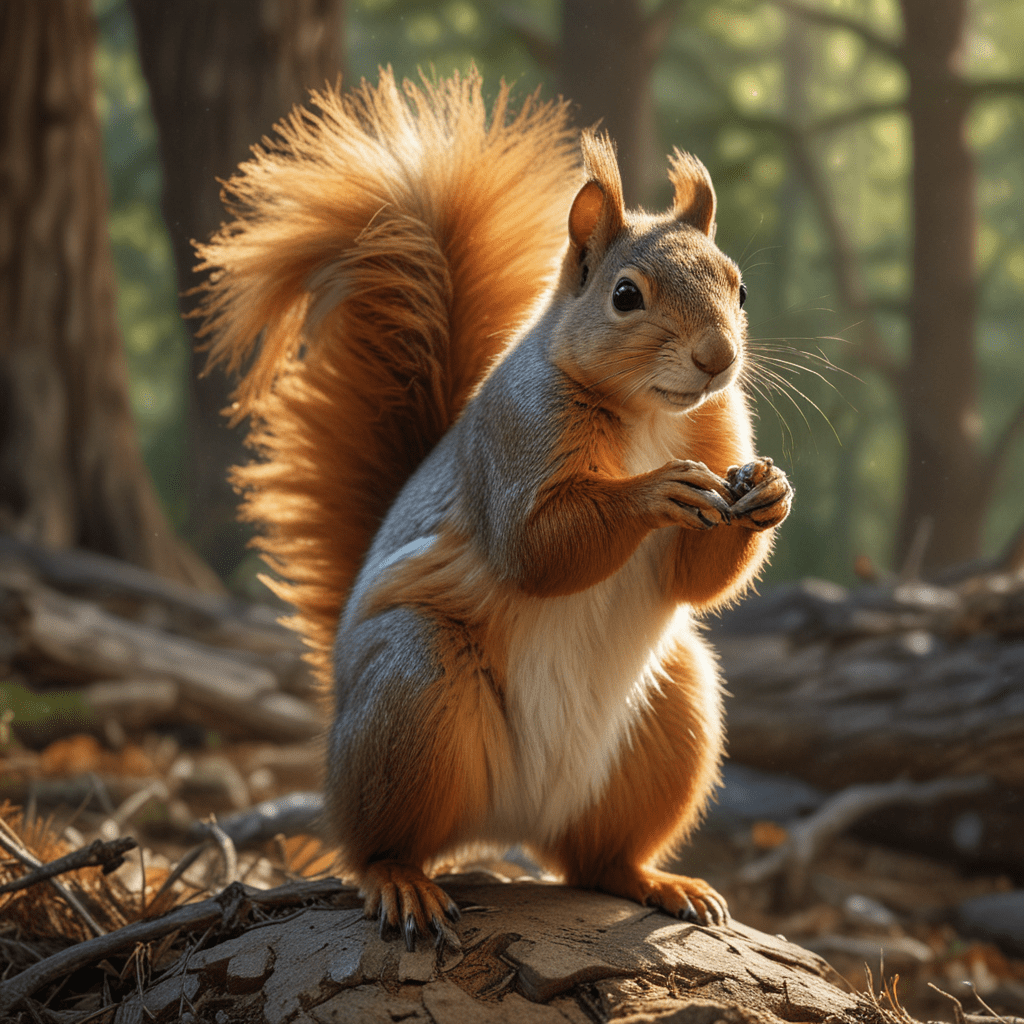The Origin of the Trickster Squirrel in Native American Mythology
Trickster figures are a ubiquitous presence in Native American mythology, symbolizing chaos, adaptability, and the fluidity of the natural world. Among these tricksters, the squirrel holds a prominent place, captivating listeners with tales of cunning, humor, and supernatural abilities.
The origins of the trickster squirrel vary across Native American tribes, each with its unique creation story. In some tales, the squirrel is born from the union of the Sky Father and the Earth Mother, inheriting traits from both realms. Other legends portray the squirrel as a mischievous spirit that emerged from the chaos of the primordial world, embodying the unpredictable nature of existence.
Characteristics of the Trickster Squirrel
The trickster squirrel is often depicted as a small, agile creature with a bushy tail and bright eyes. Despite its diminutive size, the squirrel possesses extraordinary abilities, including the power to change its shape, vanish at will, and communicate with animals. Its cunning and resourcefulness allow it to outwit even the most powerful beings, often using humor and deception to achieve its goals.
The squirrel's mischievous nature is balanced by a deep understanding of the natural world. It serves as a guide and protector of the forest, using its knowledge of the land to help those in need. The squirrel's ability to navigate both the physical and spiritual realms makes it a mediator between humans and the supernatural world.
VI. Variations in Different Tribes
The trickster squirrel takes on diverse forms and characteristics depending on the Native American tribe telling its tale. Among the Cherokee, the squirrel is known as Tsul 'kalu, a mischievous spirit that brings both laughter and trouble to the forest. The Navajo depict the trickster squirrel as Ma'ii, a cunning and resourceful companion who aids the Navajo people in their struggles. In Iroquois mythology, the squirrel is called Ajedak, a wise and enigmatic creature that serves as a messenger between the gods and humans.
VII. The Trickster Squirrel in Contemporary Culture
The trickster squirrel continues to captivate audiences in modern times, finding its way into literature, art, and popular media. Children's books and animated films portray the squirrel as a lovable and mischievous character, while contemporary Native American artists incorporate the trickster's imagery into their paintings and sculptures. The squirrel's timeless appeal lies in its ability to represent the complexities and contradictions of human nature, making it a relatable and enduring figure.
VIII. The Trickster's Legacy
The trickster squirrel holds a significant place in Native American heritage, serving as a timeless symbol of resilience and adaptability. Trickster tales have been passed down through generations, shaping the cultural identity of Native American tribes. They offer valuable lessons about survival, creativity, and the importance of embracing both the light and dark aspects of life. By embodying the spirit of the trickster, Native Americans have celebrated their own ability to overcome challenges and thrive in a changing world.
IX. Cultural Impact on Native American Societies
The trickster squirrel myth has had a profound impact on Native American societies, influencing social behavior and spiritual beliefs. Trickster tales provide a moral compass, teaching lessons about honesty, respect, and the consequences of one's actions. They also offer a humorous outlet for expressing communal frustrations and anxieties. Furthermore, the trickster squirrel's connection to the natural world reinforces the sacred bond between humans and the environment, emphasizing the importance of stewardship and sustainable practices.
X. Conclusion
The legend of the trickster squirrel is an integral part of Native American mythology, embodying the chaos, adaptability, and humor of the natural world. Its diverse origins, characteristics, and cultural variations reflect the richness and complexity of Native American storytelling traditions. Through contemporary adaptations and its enduring legacy, the trickster squirrel continues to captivate audiences, reminding us of the enduring power of trickster figures and their timeless significance in human culture.
Frequently Asked Questions (FAQ)
Q: What is the significance of the trickster squirrel in Native American mythology?
A: The trickster squirrel represents chaos, adaptability, and the fluidity of the natural world. It is a symbol of resilience and teaches valuable lessons about survival, creativity, and the importance of embracing both the light and dark aspects of life.
Q: How does the trickster squirrel vary across different Native American tribes?
A: The trickster squirrel takes on diverse forms and characteristics depending on the tribe telling its tale. In some cultures, it is a mischievous spirit, while in others, it is a wise and enigmatic creature.
Q: What are some examples of famous trickster squirrel tales?
A: One popular story features the squirrel outwitting a bear by pretending to be dead. Another tale depicts the squirrel using its cunning to steal the sun from the sky.
Q: How does the trickster squirrel influence Native American societies?
A: The trickster squirrel myth has a profound impact on Native American societies, influencing social behavior and spiritual beliefs. Trickster tales provide a moral compass, offer a humorous outlet for expressing communal frustrations, and reinforce the sacred bond between humans and the environment.




